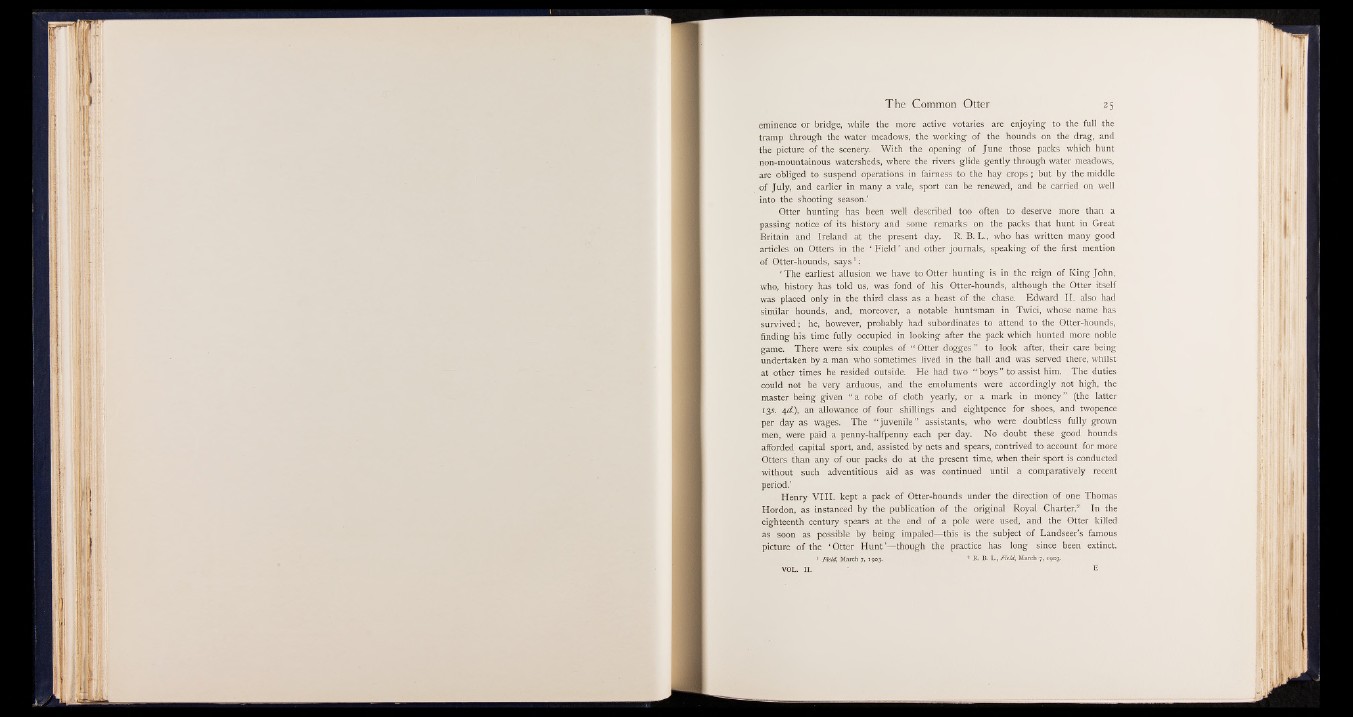
The Common Otter 25
eminence or bridge, while the more active votaries are enjoying to the full the
tramp through the water meadows, the working of the hounds on the drag, and
the picture of the scenery. With the opening of June those packs which hunt
non-mountainous watersheds, where the rivers glide gently through water meadows,
are obliged to suspend operations in fairness to the hay crops; but by the middle
of July, and earlier in many a vale, sport can be renewed, and be carried on well
into the shooting season.’
Otter hunting has been well described too often to deserve more than a
passing notice of its history and some remarks on the packs that hunt in Great
Britain and Ireland at the present day, R. B. L., who has written many good
articles on Otters in the ‘ Field ’ and other journals, speaking of the first mention
of Otter-hounds, says1 :
‘ The earliest allusion we have to Otter hunting is in the reign of King John,
who, history has told us, was fond of his Otter-hounds, although the Otter itself
was placed only in the third class as a beast of the chase. Edward II. also had
similar hounds, and, moreover, a notable huntsman in Twici, whose name has
survived; he, however, probably had subordinates to attend to the Otter-hounds,
finding his time fully occupied in looking after the pack which hunted more noble
game. There were six couples of “ Otter dogges ” to look after, their care being
undertaken by a man who sometimes lived in the hall and was served there, whilst
at other times he resided outside. He had two “ boys ” to assist him. The duties
could not be very arduous, and the emoluments were accordingly not high, the
master being given “ a robe of , cloth yearly, or a mark in money” (the latter
135. 4-d.), an allowance of four shillings and eightpence for shoes, and twopence
per day as wages. The “ juvenile” assistants, who were doubtless fully grown
men, were paid a penny-halfpenny each per day. No doubt these good hounds
afforded capital sport, and, assisted by nets and spears, contrived to account for more
Otters than any of our packs do at the present time, when their sport is conducted
without such adventitious aid as was continued until a comparatively recent
period.’
Henry V II I. kept a pack of Otter-hounds under the direction of one Thomas
Hordon, as instanced by the publication of the original Royal Charter.2 In the
eighteenth century spears at the end of a pole were used, and the Otter killed
as soon as possible by being impaled—this is the subject of Landseer’s famous
picture of the * Otter Hunt ’—though the practice has long since been extinct.
1 Field, March 7, 1903. a R. B. L., Field, March 7, 1903.
VOL. II.